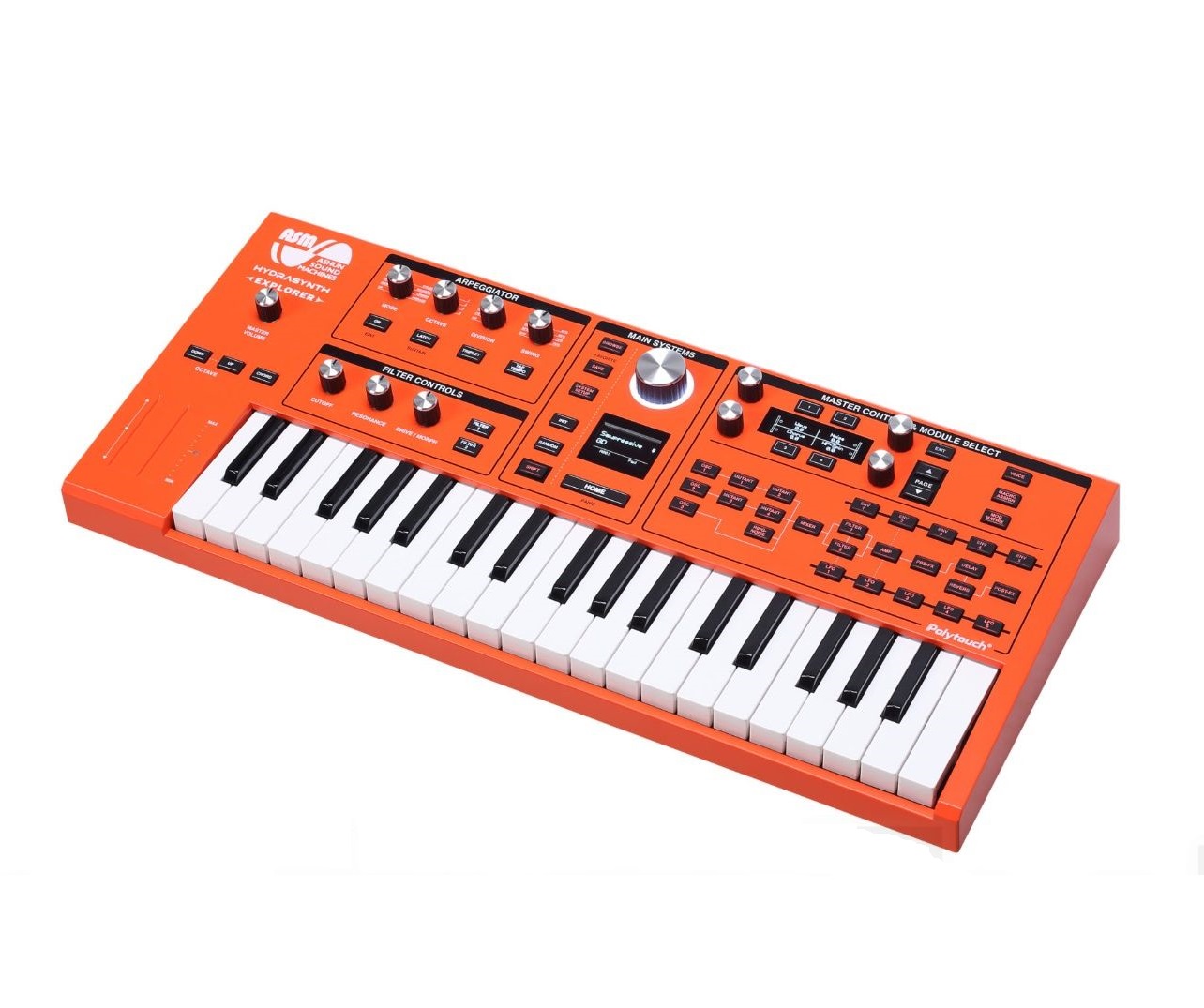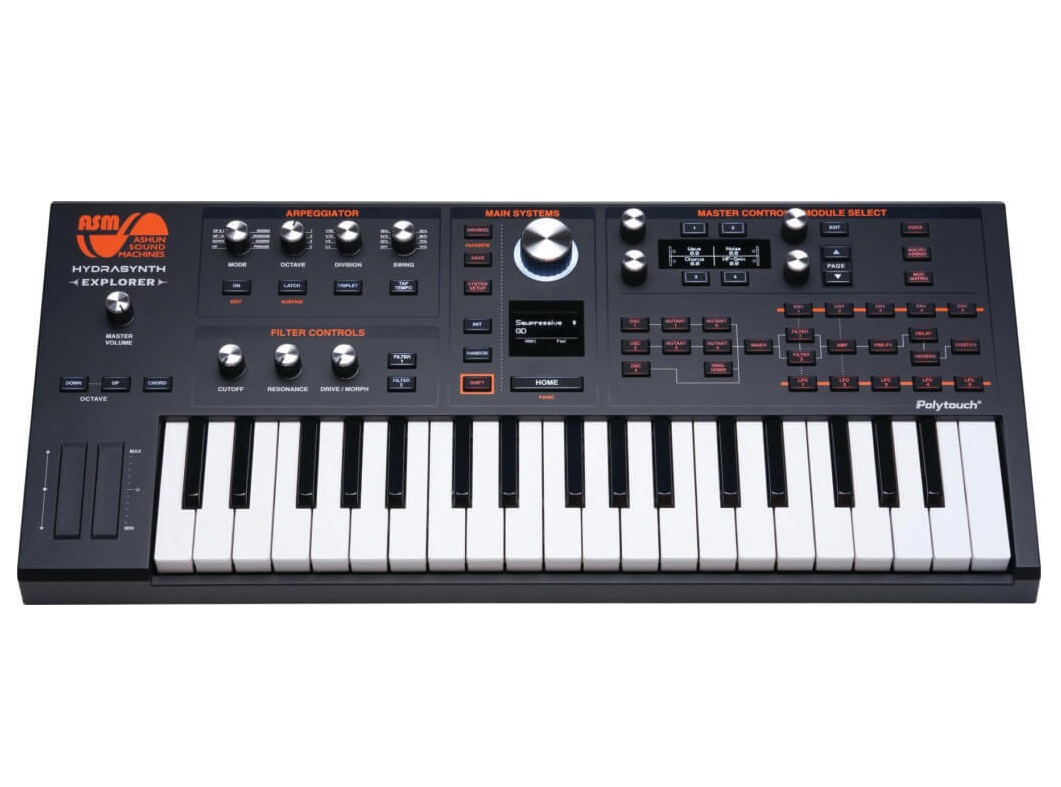ASM Hydrasynth
Electronic Instruments
Asia
Between 1901 and present
Video
The ASM Hydrasynth is a groundbreaking synthesizer that has captivated musicians and sound designers since its debut. Combining advanced digital synthesis with expressive performance features, it offers a unique tool for creating and exploring new sonic landscapes.
It is a digital wave morphing synthesizer. Unlike traditional analog synthesizers, it utilizes digital technology to generate and manipulate sound, allowing for a vast array of tonal possibilities. Its design caters to both live performers and studio producers, providing flexibility and depth in sound creation.
History
The Hydrasynth was introduced in September 2019 by Ashun Sound Machines (ASM), a company based in China. ASM emerged as a new entity in the synthesizer market, aiming to blend innovative digital technology with user-friendly design. The Hydrasynth represents a modern approach to synthesis, reflecting advancements in digital sound processing and a resurgence of interest in expressive electronic instruments in the 21st century.
Construction
The Hydrasynth is available in two main configurations: a keyboard version and a desktop/rack version. The keyboard version features a four-octave Polytouch™ keybed, which supports polyphonic aftertouch, allowing for individual expression on each note. The desktop version offers the same sound engine without the keyboard, making it suitable for musicians who prefer to use their own MIDI controllers or integrate it into a modular setup.
The front panel is designed for intuitive control, with a clear layout that provides immediate access to essential parameters. High-resolution knobs, buttons, and a large OLED display facilitate real-time sound shaping and editing.
Sound Engine and Characteristics
At the heart of the Hydrasynth is a powerful digital sound engine. It features three oscillators per voice, each capable of selecting from 219 single-cycle waveforms. Oscillators 1 and 2 can operate in WaveScan mode, allowing for smooth morphing between up to eight waveforms, creating dynamic and evolving sounds.
The instrument includes four Mutators, which are modules that further manipulate the oscillator signals. These Mutators offer various functions such as:
Pulse Width Modulation (PWM): Modifies the duty cycle of waveforms to create richer tones.
Harmonic Sweep: Alters the harmonic content of the sound for timbral variation.
Oscillator Sync: Synchronizes oscillators to produce complex harmonic structures.
Frequency Modulation (FM): Enables the creation of bell-like and metallic sounds through frequency modulation techniques.
The Hydrasynth’s dual filter section provides 16 different filter models, including various low-pass, high-pass, band-pass, and more exotic types. These filters can be configured in series or parallel, offering extensive tonal shaping capabilities.
Modulation and Effects
A standout feature of the Hydrasynth is its comprehensive modulation matrix. It offers:
Five LFOs (Low-Frequency Oscillators): Each with multiple waveforms and adjustable parameters, capable of modulating almost any aspect of the sound.
Five DAHDSR Envelopes: Featuring Delay, Attack, Hold, Decay, Sustain, and Release stages, these envelopes provide detailed control over the dynamics of the sound.
The modulation matrix allows for complex routing, enabling users to assign modulation sources to various destinations within the synthesizer, facilitating intricate and evolving soundscapes. Additionally, the Hydrasynth includes a suite of high-quality effects, such as chorus, delay, reverb, flanger, and distortion, allowing users to enhance and finalize their sounds within the instrument.
Playing Methods
The Hydrasynth’s Polytouch™ keyboard supports polyphonic aftertouch, meaning that each key responds individually to pressure. This feature allows musicians to impart expressive nuances to their performance, such as vibrato or dynamic volume changes, on a per-note basis. This level of expression is particularly valuable for emulating acoustic instruments or creating dynamic electronic textures.
For those using the desktop version or external controllers, the Hydrasynth is fully MIDI-compatible, allowing it to be played and controlled via various MIDI devices, including keyboards, sequencers, and DAWs (Digital Audio Workstations).
Roles in Music
The Hydrasynth’s versatility makes it suitable for a wide range of musical genres and applications. Its rich and evolving textures are ideal for ambient and electronic music, while its precise control and expressive capabilities make it a valuable tool for film scoring and sound design. Musicians in genres such as pop, rock, and experimental music also find the Hydrasynth’s diverse sound palette beneficial for adding unique elements to their compositions.
Cultural Significance
Since its release, the Hydrasynth has been embraced by the music community for its innovative approach to digital synthesis and expressive performance features. It represents a modern evolution in synthesizer design, bridging the gap between traditional playability and advanced sound design capabilities. Its adoption by various artists and producers highlights a growing appreciation for instruments that offer both depth and immediacy in sound creation.
The ASM Hydrasynth stands as a testament to the advancements in digital synthesizer technology, offering musicians and sound designers a powerful and expressive tool. Its combination of a versatile sound engine, extensive modulation options, and performance-oriented features makes it a significant instrument in the landscape of modern music production.
FAQ
What is the history of the ASM Hydrasynth?
Released in 2019 by Ashun Sound Machines, the Hydrasynth is a powerful digital synthesizer known for its advanced wavetable synthesis, polyphonic aftertouch, and flexible modulation matrix. It quickly gained popularity among electronic musicians and sound designers for its deep sound design capabilities.
How is the ASM Hydrasynth used in music production?
The Hydrasynth is used for creating rich, evolving textures, lush pads, and complex leads. With its extensive modulation options, customizable waveforms, and built-in effects, it’s a versatile tool for ambient, electronic, and experimental music production.
What role does the ASM Hydrasynth play in modern music?
The Hydrasynth is favored for its expressive capabilities, especially with its polyphonic aftertouch and ribbon controller. It plays a significant role in cinematic soundscapes, EDM, and progressive music, allowing artists to push creative boundaries with unique synthesis techniques.
 Links
Links
References
Other Instrument
Categories



















